The Cooler Master XG850 Plus Platinum PSU Review: Quality Plus RGB
by E. Fylladitakis on August 25, 2022 9:30 AM EST- Posted in
- Cases/Cooling/PSUs
- PSUs
- Cooler Master
- 80Plus Platinum
- ARGB
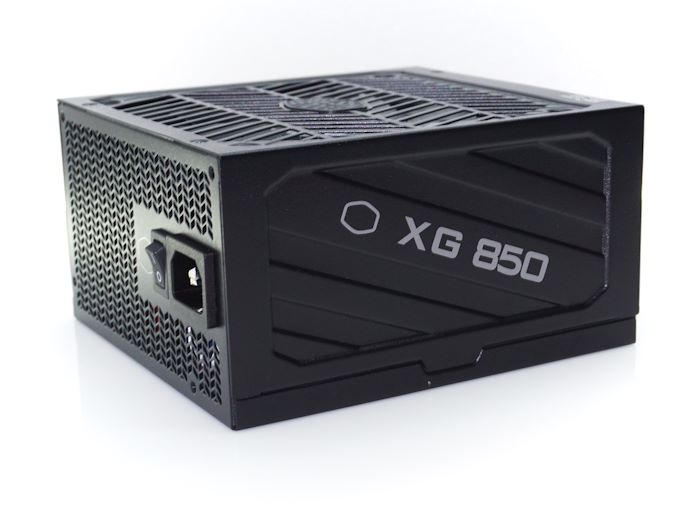
Cooler Master is a well-known brand among enthusiasts. The firm began as a maker of PC cooling systems and rapidly moved into cases and power supplies, which are responsible for most of its present renown. Today, the firm enjoys global recognition and manufactures hundreds of products, but they never stop updating and upgrading their catalogs.
Although Cooler Master did diversify towards gaming PC peripherals and even relevant furniture, the company remains strongly focused on PC Cases, Coolers, and PSUs, offering a vast selection of products in all of these three categories. At the time of this review, Cooler Master is offering an outworldish assortment of over 75 PC cases, 90 coolers, and 120 PSUs.
Today we are having a look at the new XG Plus Platinum series, the latest power supply family from prolific PC peripherals producer Cooler Master. Designed to offer a quality PSU with an extra dash of flair, the RGB fan (and RGB display) equipped XG Plus Platinum is a PSU that's not quite like anything else on the market. The XG family ranges from 650 to 850 Watts, and today we're evaluating the most powerful unit in the series, the 850W XG850 Plus Platinum.
| Cooler Master XG850 Plus Platinum Power specifications ( Rated @ 50 °C ) |
|||||
| RAIL | +3.3V | +5V | +12V | +5Vsb | -12V |
| MAX OUTPUT | 20A | 20A | 70.8A | 3A | 0.3A |
| 100W | 849.6W | 15W | 3.6W | ||
| TOTAL | 850W | ||||
| AC INPUT | 100 - 240 VAC, 50 - 60 Hz | ||||
Packaging and Bundle
Compared to most of the PC industry these days, Cooler Master is anything but subtle with the design of their packaging. The artwork is colorful and extravagant, mixing geometrical patterns with pictures and striking colors. Ultimately, what matters is that the unit is shipped in a very sturdy cardboard box and protected by ample layers of packaging foam.
Besides the typical AC power cable, mounting screws, and a basic instructions leaflet, Cooler Master also bundles a number of cable ties and a few cables straps alongside with XG Plus Platinum.
The XG Plus Platinum is an all-modular design, allowing for the removal of every DC power cable, including the 24-pin ATX connector. All of the cables are bare, ribbon-like, with black wires and black connectors. There is no floppy connector or adapter.
| Cooler Master XG850 Plus Platinum | ||
| Connector type | Hardwired | Modular |
| ATX 24 Pin | - | 1 |
| EPS 4+4 Pin | - | 1 |
| EPS 8 Pin | - | 1 |
| PCI-E 5.0 | - | - |
| PCI-E 8 Pin | - | 6 |
| SATA | - | 12 |
| Molex | - | 4 |
| Floppy | - | - |
The Cooler Master XG850 Plus Platinum PSU
External Appearance
The chassis of the Cooler Master XG850 Plus Platinum PSU measures 86 mm × 150 mm × 160 mm (H × W × D), which is 20 mm deeper than a fully ATX compliant PSU. The vast majority of modern PC cases account for the length of such high-performance PSU but the slightly extended length can still be a compatibility problem with certain small footprint designs.
Cooler Master really does want their latest PSU to stand out from the crowd, thus they went with a custom chassis with an embossed left side and an integrated fan finger guard. The embossed left side will be visible if the unit is placed upside-down at the bottom of a typical ATX case. The sticker with the unit’s certifications and specifications covers most of the unit’s top side.
A typical on/off switch can be seen at the rear side of the unit, right next to the standard AC power receptacle. The perimeter of Cooler Master’s logo is printed next to the switch. About half of the front side of the unit is covered by the connectors for the modular cables, with a basic legend printed above each connector. Here we can also see a small connector for an internal USB cable that connects the PSU to the motherboard.
While the PSU is turned off, the right side of the unit is entirely plain and, unlike the metallic matte body of the unit, it is a glossy acrylic. There is an RGB display hidden behind the acrylic, displaying the unit’s model and three practical figures – power output, temperature, and fan RPM. The PSU needs to be installed with care because the acrylic can be very easily scratched.
However, the real problem here is the orientation of the PSU itself – if users select a case that has the PSU compartment located at its bottom, they will have to make a choice between showcasing the RGB fan or the side panel display. It is also likely that the side panel display will not be visible even if the PSU is located at the top of the case, as many products are designed so as to hide the PSU from direct eye contact.
Internal Design
Cooler Master has rebranded the 135 mm RGB fan that is inside the XG Plus Platinum unit. The fan has a hydro-dynamic sleeve bearing, which is both quiet and reliable. It has a maximum speed of 1800 RPM, which is a lot for a fan of that size but, according to the graphs that are printed on the box, the fan should not even reach 1000 RPM under normal ambient conditions.
The inside of the XG Plus Platinum is unlike any platform that we have encountered before, with Cooler Master insisting that this PSU is entirely of their own design. Huizhou Xinhuiyuan Technology might kind of disagree with that claim though. Nonetheless, we have no details regarding the platform or how much Cooler Master’s engineers were involved on its design.
The filtering stage of the Cooler Master XG Plus Platinum PSU is textbook, with a total of four Y capacitors, two X capacitors, and two filtering inductors. There also is a relay to bypass the NTC for increased efficiency. The rectifying bridges are placed on the main heatsink of the primary side’s inverting components. The active APFC components are attached to a separate heatsink across the side of the unit. Nippon Chemi-Con supplies the large 450V/680μF APFC capacitor, which is placed right next to a sizable filtering coil.
On the primary side of the main transformer, four transistors form a full-bridge inversion topology, while four MOSFETs generate the 12V line at the secondary side of the transformer. It is noteworthy that these four MOSFETs are the JMSL040SAG by JieJie Microelectronics, a company whose products we've never encountered before. For the record, the MOSFETs on the primary side (NCE65TF130) are provided by NCE Power.
The 3.3V and 5V lines are being generated via the DC-to-DC conversion circuits. This would have been a typical configuration for any unit with a high efficiency certification, with the unique characteristic here being that the conversion circuitry is placed directly onto the board with the cable connectors instead of stand-alone PCBs. All of the secondary capacitors, electrolytic and polymer alike, are provided by Nippon Chemi-Con and Nichicon, both of which are highly reputable Japanese manufacturers.


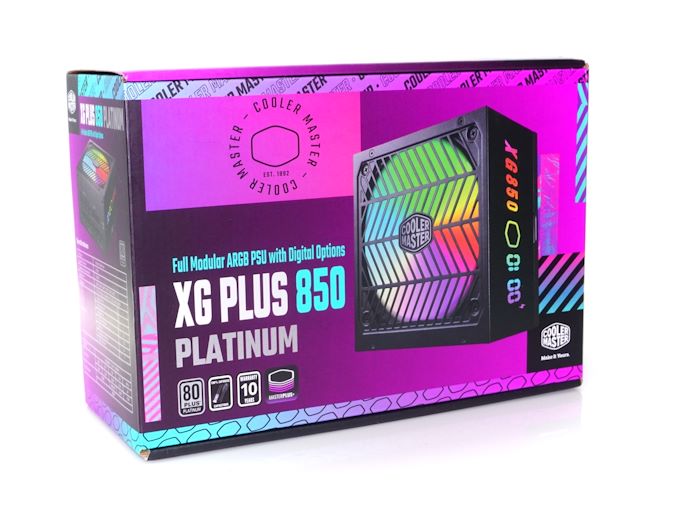
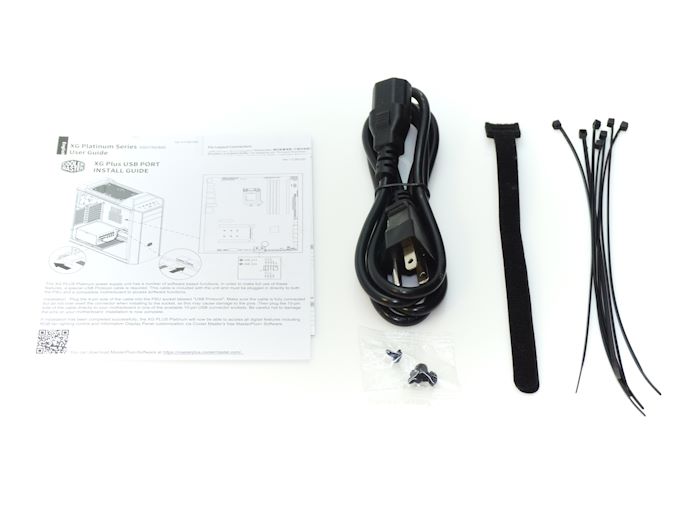
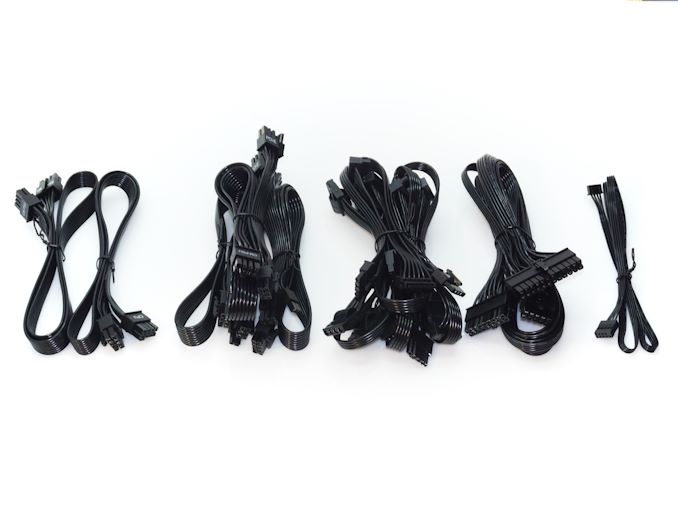
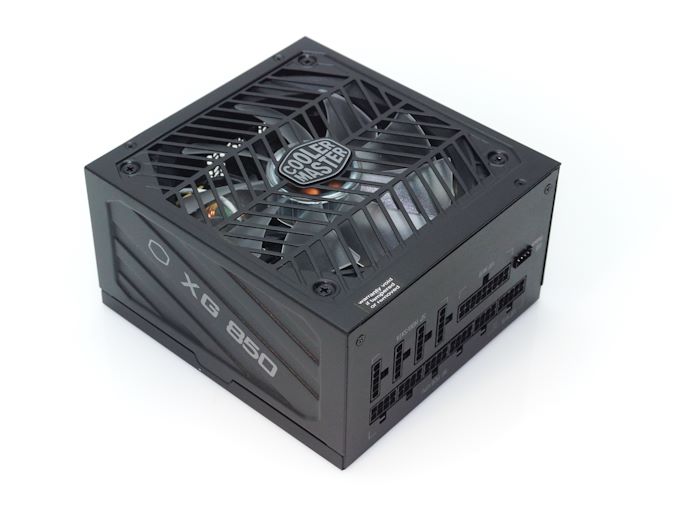

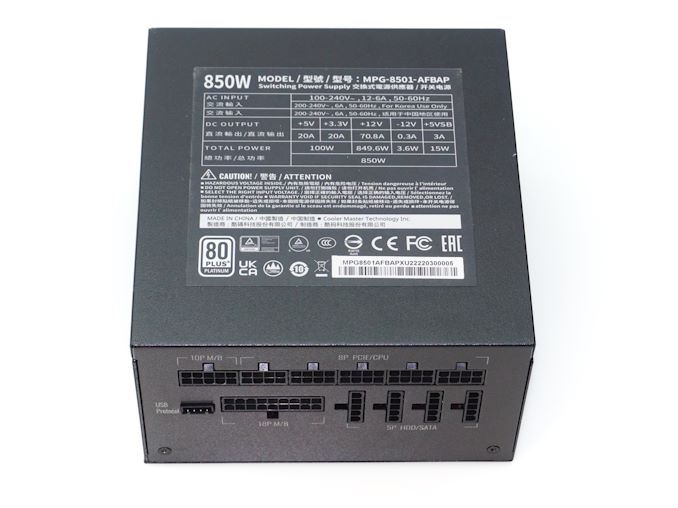
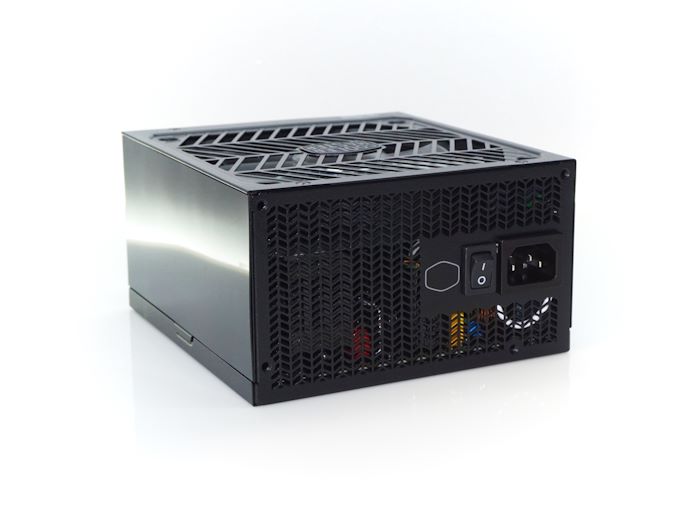
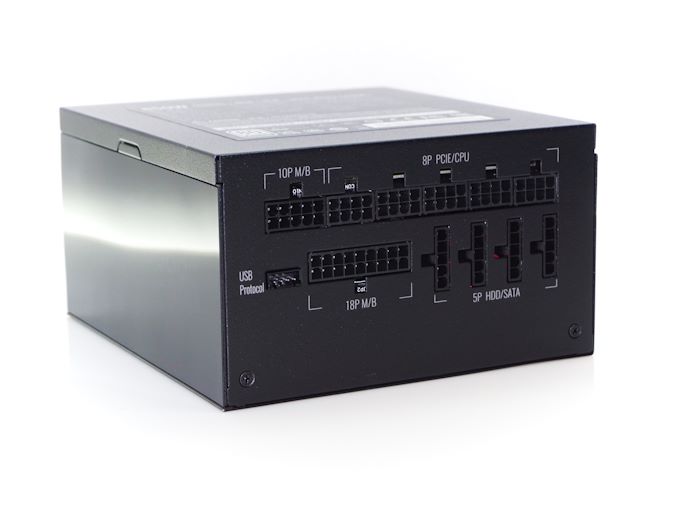
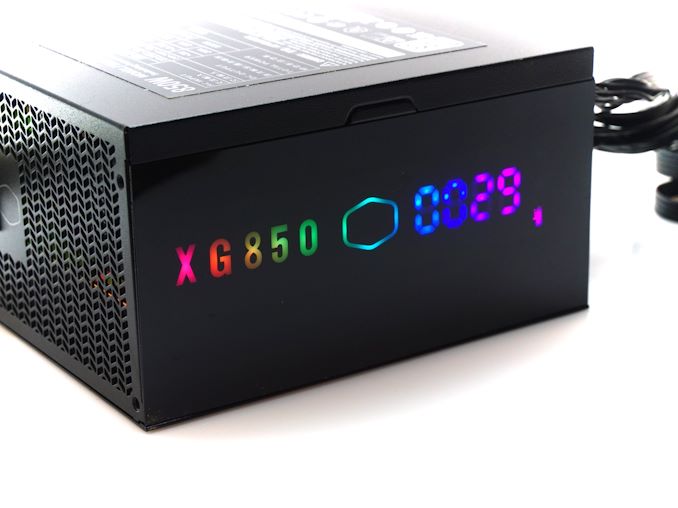
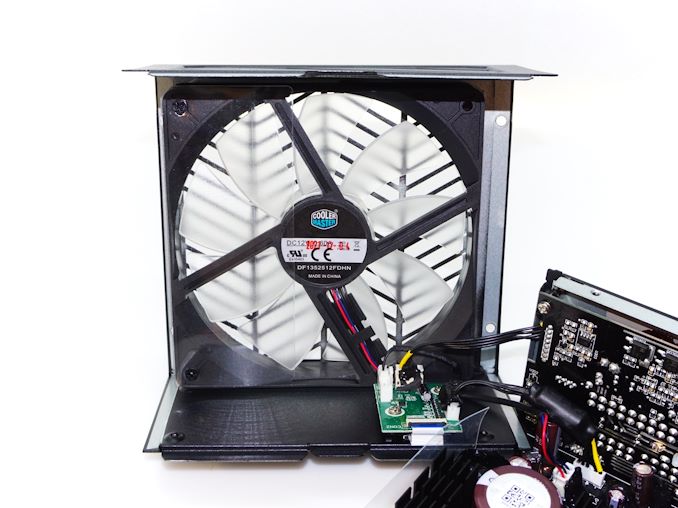
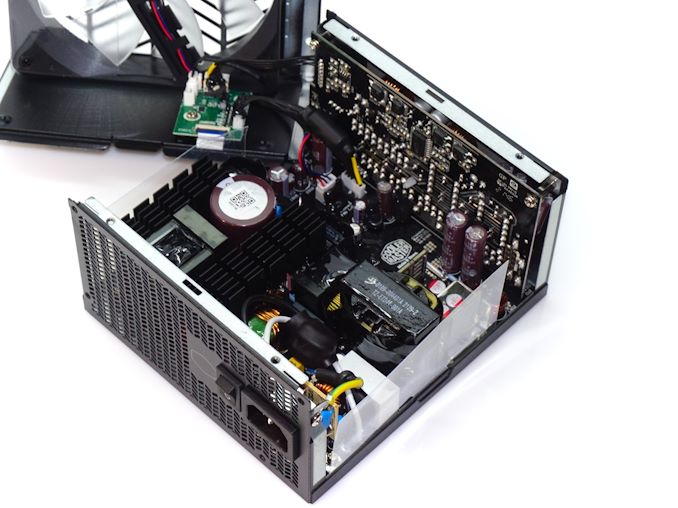
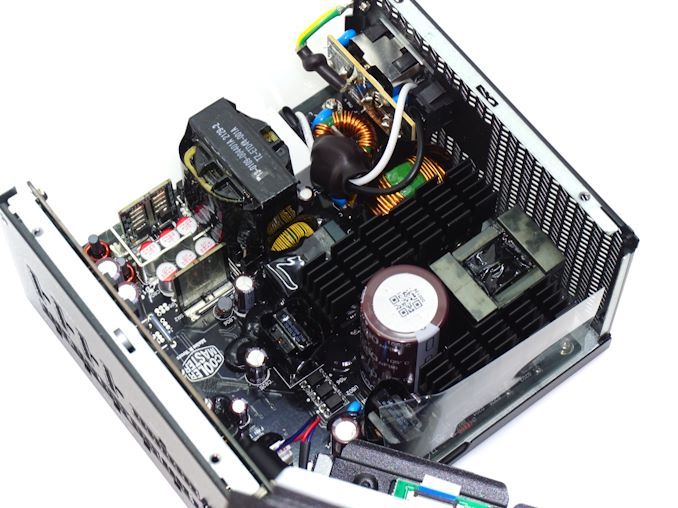
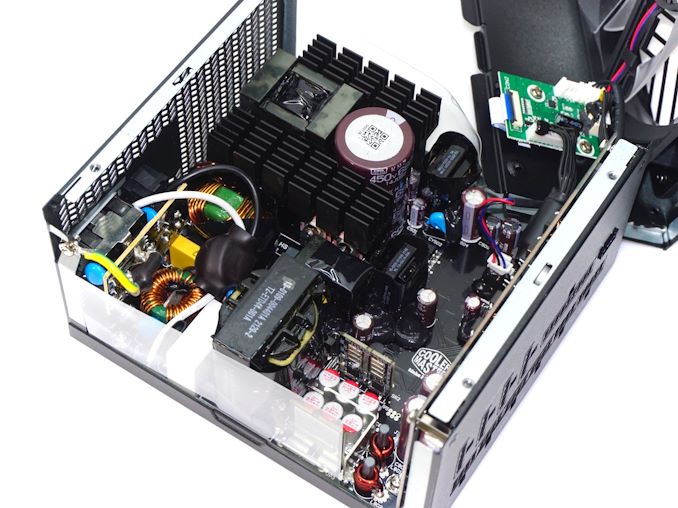
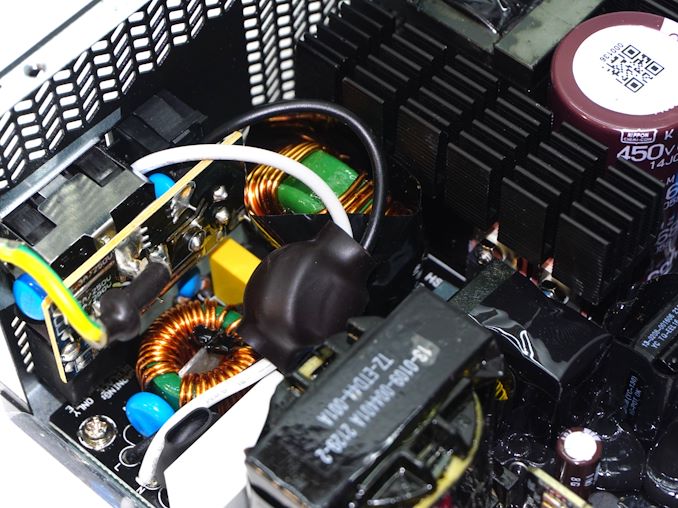
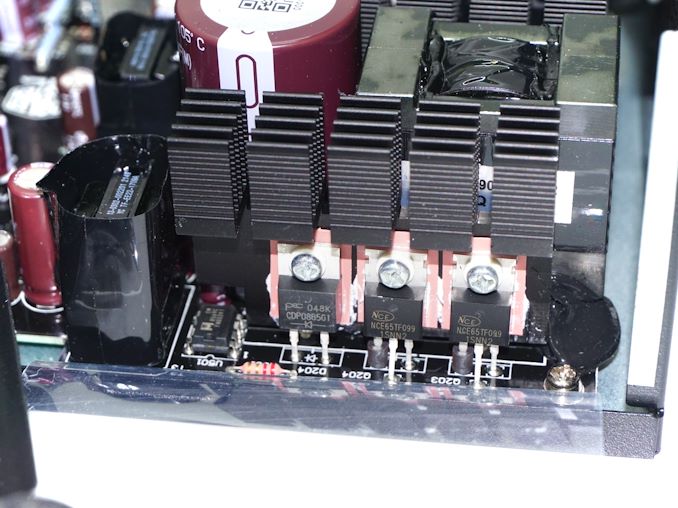
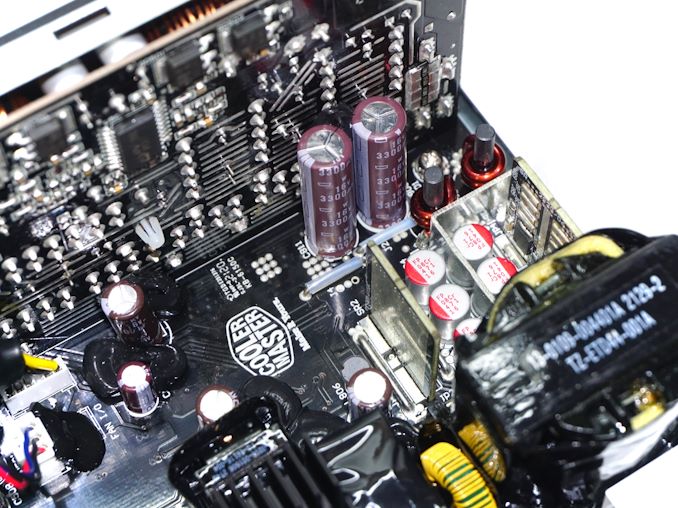








7 Comments
View All Comments
erotomania - Thursday, August 25, 2022 - link
All those fancy colors and yet a BEIGE mains cable. C'mon E!!MKNick10 - Friday, August 26, 2022 - link
You need a case that will allow you to even see the PSU in the first place...erotomania - Friday, August 26, 2022 - link
Ok, done. Several times over.TheinsanegamerN - Monday, August 29, 2022 - link
why are you staring at your desktop?erotomania - Monday, August 29, 2022 - link
Because the colors are mesmerizing.Samus - Thursday, August 25, 2022 - link
$260. Ok.Oxford Guy - Monday, September 5, 2022 - link
And an extremely boring box.Where is the rainbow paint job? Rhinestones. Polka dots. Glitter.